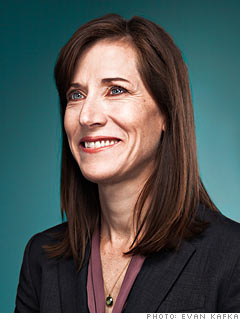Manager tenure: 11 years
Fund type: Mid-cap growth
Expenses: 1.49%
Her picks Microchip Technology: "This semiconductor company is a stable grower. They have products across a very diverse customer base: consumer, industrial and technology. They pay a really good dividend [currently 4%]. I think it will grow at around 12% a year."
ULTA:"Ulta is an innovator. It has brought together salon, prestige and mass-market beauty products and sells them in lifestyle malls. The company has no debt. And management estimates that the store base can double over the next five years."
Harman International:"People overlook the audio and information systems company because of poor past management, but a new team is improving operating fundamentals. They also have a growing Asian market, and are expanding into lower-end products."
Secret of success Scott buys midsize businesses that are generating increasing cash and growing earnings. Most of her holdings -- now 67 stocks -- fit into three categories. Typically, about half the fund is in stable growth stocks, companies that are stepping up earnings by 8% to 12% a year. The rest is split between what she calls "greenfield growth" (those whose innovation allows at least 20% growth per year) and "misunderstoods" (those that promise a turnaround or can reassert growth).
"But there are also times when you have to pay attention to extreme macroeconomics," Scott says, pointing to 2008 as an example. Worried about sky-high commodity prices and a deteriorating credit climate, she went toward defensive sectors, like health care and consumer staples. As a result, the fund took less of a beating than its peers. Then, in early '09, she sought values in companies poised to benefit from a resurgence in consumer spending.
Where she sees opportunity Scott is leaning more than usual toward innovators, since they can increase earnings without economic tail winds. These aren't just tech firms; she's finding buys even in industrials and staples.
The risk: "Innovative growers are sought-after now, so you have to be careful not to pay too much." She says a price/earnings ratio above 35 is a sign that more scrutiny is needed. (The P/E of the Russell Midcap, meanwhile, is 16.)
NEXT

